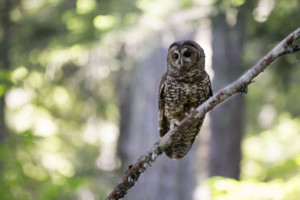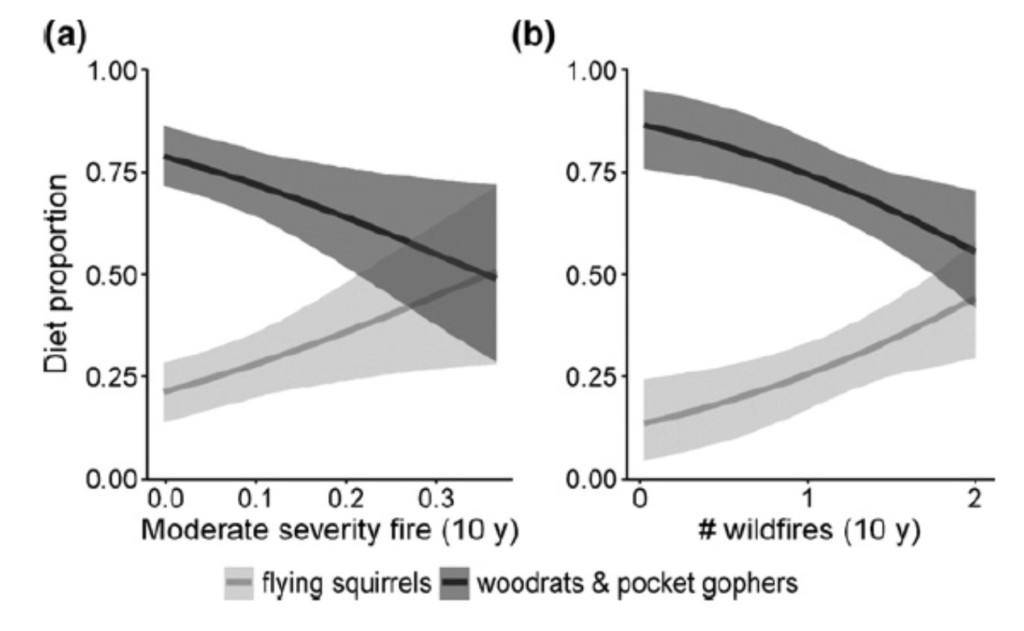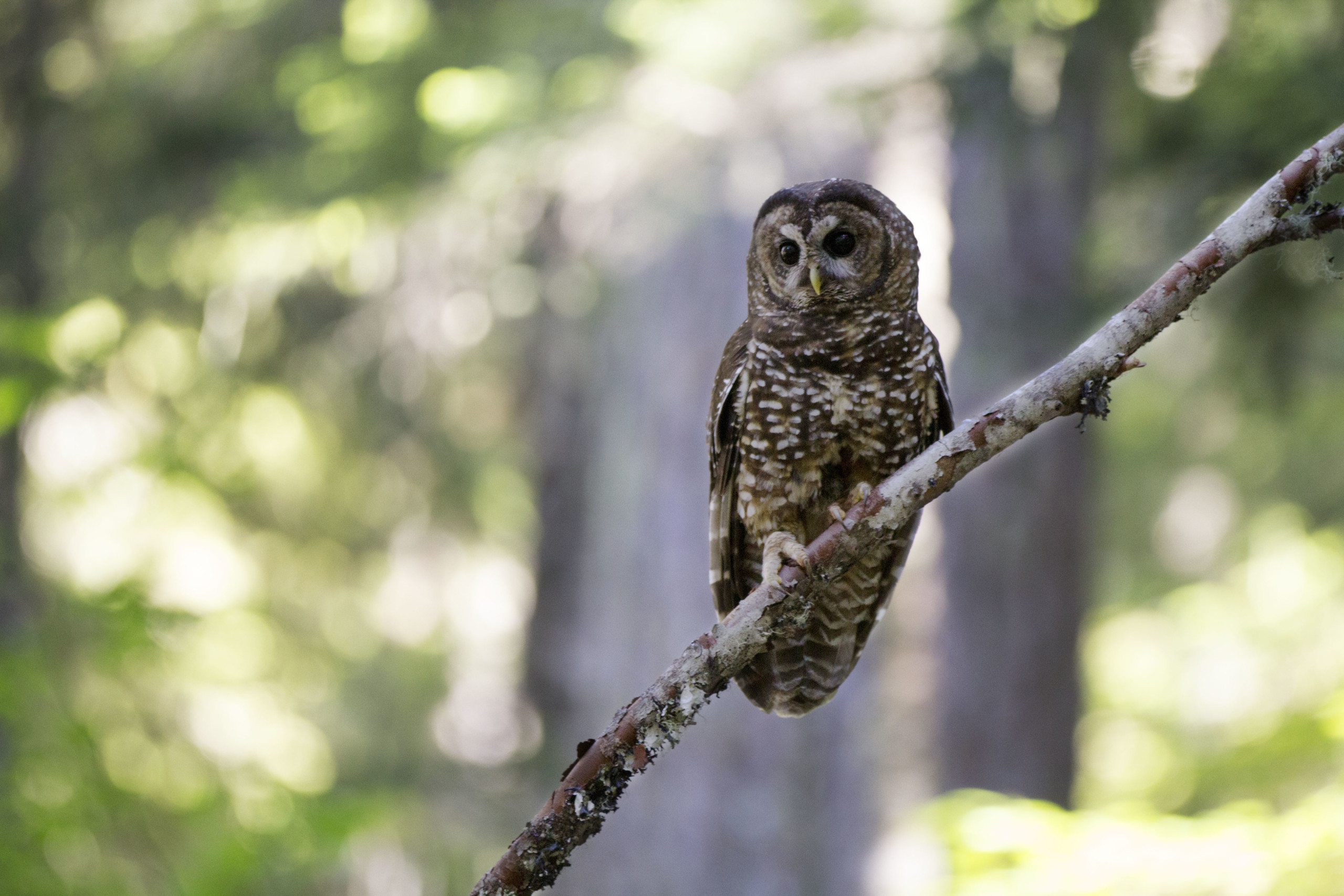 LINKED PAPER
LINKED PAPER
Stable isotopes reveal unexpected relationships between fire history and the diet of Spotted Owls. Hobart, B. K., Kramer, H. A., Jones, G. M., Dotters, B. P., Whitmore, S. A., Keane, J. J., & Peery, M. Z. 2021. IBIS. DOI: 10.1111/ibi.12832. VIEW
Wildfires play an important role of numerous ecosystems, shaping the growth of trees, the behavior of animals and the interactions between countless species (Westerling 2016). For example, a recent Ibis study showed how the severity and frequency of fires in the Sierra Nevada (USA) affect the diet of the California spotted owl (Strix occidentalis occidentalis). Using stable isotopes, the researchers found that these raptors consumed more flying squirrels (Glaucomys oregonensis) compared to woodrats (Neotoma species) and pocket gophers (Thomomys species) when their territories experienced more extensive and frequent fires. However, the underlying mechanisms of this diet shift are still unclear.
Prey populations
The altered diet of the California spotted owls might be due to a change in prey abundance. Terrestrial and burrowing animals, such as woodrats and pocket gophers, are more severely affected by wildfires than arboreal animals, such as flying squirrels. It is thus possible that the number of woodrats and pocket gophers drastically declined after a forest fire, resulting in their smaller proportion in the owls’ diet. In addition, fire can stimulate the growth of certain fungi that flying squirrels feed on (Johnson 1995). Hence, the population of flying squirrels might have increased in response to a fire-induced growth of these fungi. However, this potential connection between fungi, flying squirrels and spotted owls remains to be confirmed.

Figure 1.The proportion of flying squirrels (light grey) and woodrats and pocket gophers (dark grey ) in the diet of California Spotted Owls is influenced by the (a) the severity and (b) the number of wildfires in the last 10 years.
Behavior
Apart from changes in prey abundance, animals might also display different behaviors following a forest fire. Experimental work suggests that flying squirrels shift their distribution from burnt to unburnt sections of the forest, resulting in higher densities of these prey in smaller forest patches (Sollmann et al. 2016). Moreover, the flying squirrels that do remain in the burnt areas might be more visible in the blackened canopies, making them an easy target for hunting owls (Wilson 2010). There are clearly multiple mechanisms by which fire may alter prey availability and change the proportions of flying squirrels, woodrats and pocket gophers in the diet of spotted owls. There is still much work to be done to unravel these ecological knots, but it is clear that wildfires will remain a ‘hot topic’ in the study of California spotted owls.
References
Johnson, C.N. (1995). Interactions between fire, mycophagous mammals, and dispersal of ectomycorrhizal fungi in eucalyptus forests. Oecologia 104: 467–475. VIEW
Sollmann, R., White, A. M., Tarbill, G. L., Manley, P. N., & Knapp, E. E. (2016). Landscape heterogeneity compensates for fuel reduction treatment effects on Northern flying squirrel populations. Forest Ecology and Management 373: 100-107. VIEW
Westerling, A. L. (2016). Increasing western US forest wildfire activity: sensitivity to changes in the timing of spring. Philosophical Transactions of the Royal Society B: Biological Sciences 371(1696): 20150178. VIEW
Wilson, T.M. (2010). Limiting Factors for Northern Flying Squirrels (Glaucomys sabrinus) in the Pacific Northwest: A Spatio-Temporal Analysis. Cincinnati: Union Institute and University. VIEW
Image credits
Top right: Spotted Owl (Strix occidentalis) | Mount Rainier National Park | CC BY-SA 2.0 Wikimedia Commons
Blog posts express the views of the individual author(s) and not those of the BOU.
If you want to write about your research in #theBOUblog, then please see here





